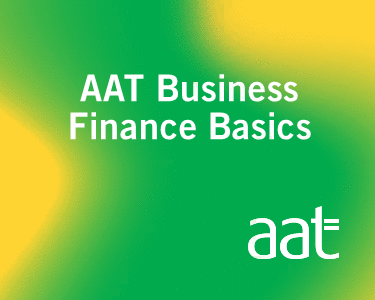VAT is a tax which is charged on many goods and services provided by businesses in the UK. All VAT registered businesses must complete and submit VAT returns to Her Majesty’s Revenue and Customs (HMRC).
Make your VAT return a breeze with ANNA Money
This handy VAT filing tool from ANNA Money helps you submit your VAT return from any Excel spreadsheet, instantly. Just upload your Excel spreadsheet, or add your details to their MTD-ready template, and ANNA will file your return for you – free of charge.
Get started

When do I need to complete a VAT Return?
From the date of registration, a VAT registered business charges VAT on their taxable sales (known as output VAT). They may be able to claim some of the VAT charged on their purchases and other expenses (known as input VAT).
The business must pay to HMRC the difference between the output VAT and the input VAT. However, if the input VAT is higher than the output VAT the business will be due a VAT refund, which is repayable by HMRC.
The business must inform HMRC of the VAT which is due to be paid (or refunded) by submitting a VAT return.
VAT returns usually cover a three month period and the relevant dates will be shown on the return, for example, 1 January to 31 March.
Find out about tax changes to VAT for the current tax year.
How difficult is it to complete a VAT Return?
If your business is relatively simple, you may well find that you’re able to complete your VAT return each quarter without any help.
The rules and regulations which govern the treatment of VAT can be very complex. They are detailed in a lengthy document called the VAT guide (via GOV.UK).
You need to be aware that:
- VAT can be charged at different rates
- Input VAT cannot always be claimed
- The penalties can be quite severe if you get it wrong
- There are specialist VAT schemes available to some businesses:
Further guidance on completion of the VAT return can be found on the GOV.UK website.
If you’re in any way unsure of how to complete the returns, it may be best to ask an accountant to do this for you.
What is the cash accounting scheme?
A business must pay to HMRC the difference between the VAT on their sales invoices and the VAT on invoices they have received. This is regardless as to whether or not the business has actually received or paid the money.
Under the cash accounting scheme, businesses pay to HMRC the VAT collected on payments received from customers, rather than the amount of VAT invoiced. Input VAT is claimed on goods and services used, once payment has been made for them. Businesses are eligible to use the cash accounting scheme if their taxable turnover is less than £1.35 million per year.
If you’re using the cash accounting scheme, the spreadsheet download below can be used to help you when completing your VAT return.
Download: Please login or register to get your download.
Quick guide to completing a VAT Return
These are the boxes of the VAT return that you will be asked to complete when you submit your VAT return online:
| Box to be completed | Comments |
|---|---|
| Box 1 – VAT due in this period on sales and other outputs | To calculate the output VAT that is due for a period, the first step is to identify the total sales. The second step is to calculate the VAT. The total is divided by six – this amount is then entered into Box 1. |
| Box 2 – VAT due in this period on acquisitions from other EC Member States | Box 2 is only used if items have been bought from other EC (European Community) countries, the figure will be taken from purchases, not sales. Multiply any purchases by the rate of VAT (20%). Often this box will be £0.
The treatment of items included in this box may be affected by the UK leaving the EU. |
| Box 3 – Total VAT due (the sum of boxes 1 and 2) | Box 3 is the sum of Boxes 1 and 2, it is automatically calculated when the return has been completed. |
| Box 4 – VAT reclaimed in this period on purchases and other inputs (including acquisitions from the EC) | The general rule is that VAT can be reclaimed by businesses on goods and services bought by the business that has been charged by the supplier, as long as the business makes standard, reduced or zero-rate supplies. Box 4 is the amount of VAT reclaimed from purchases and other expenses (input VAT). If any acquisitions from EC member states were included in box 2, this amount must also be included. |
| Box 5 – Net VAT to be paid to HRMC or reclaimed by you (difference between boxes 3 and 4) | Box 5 is the difference between boxes 3 and 4, it is automatically calculated when the return has been completed. |
| Box 6 – Total value of sales and all other outputs excluding any VAT. Include your box 8 figure | Box 6 shows the total value of net sales for the period (excluding VAT). Do not include pence. This is calculated by subtracting the total sales from the VAT. |
| Box 7 – Total value of purchases and all other inputs excluding any VAT. Include your box 9 figure | Box 7 shows the total value of net purchases and expenses for the period (excluding VAT). Do not include pence. |
| Box 8 – Total value of all supplies of goods and related costs, excluding any VAT, to other EC member States | Box 8 shows the total value of net sales (goods only) for the period (excluding VAT) to other EC member states. Do not include pence. This box is often £0. |
| Box 9 – Total value of acquisistions of goods and related costs excluding any VAT, from other EC Member States | Box 9 shows the total value of net purchases for the period (excluding VAT) from other EC member states. Do not include pence. This box is often £0.
The treatment of items included in this box may be affected by the UK leaving the EU. |
Submitted return – The final return will look as follows: boxes 3 and 5 have been automatically calculated.
How and when do I submit my return?
VAT returns must be submitted to HMRC online and any VAT that is due must be paid electronically. To use this service, you will need to register online to submit your VAT return.
The due date for the submission of your VAT return and to make any payment due is is usually one month and seven days after the end of the VAT period. You can sign up to receive email reminders that your VAT return is due via your online account.
You can find out how much VAT you will pay using our online calculator.
Can I correct my VAT Return if I find an error?
Net errors made in previous VAT periods can be corrected on later VAT returns if they are either:
- £10,000 or less, or
- £10,000 to £50,000 (but not exceeding 1% of your quarterly turnover)
A net error is the difference between the total errors in output VAT and the total errors in input VAT.
Tax doesn't need to be taxing
We'll email you expert tips to help you manage your business finances. You can unsubscribe at any time.










